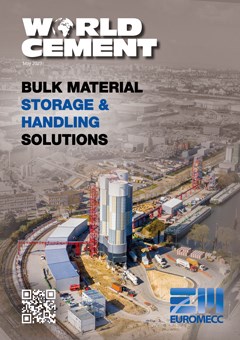Editorial comment
Cement and its primary downstream product: concrete, despite their vital importance to global infrastructure, rarely find themselves on the silver screen outside of depictions of the built environment, or as a mafia-style means of body disposal (see the 1968 neo-noir thriller Lady In Cement).
Register for free »
Get started now for absolutely FREE, no credit card required.
However, the recent premiere of Netflix show Unstable (2023) might perhaps signal a shift in cement and concrete’s place within the popular consciousness. Unstable, a workplace comedy starring father-son duo Rob and John Owen Lowe, follows the story of a recently bereaved bio-tech billionaire Ellis Dragon and his estranged son Jackson as they try to salvage their relationship as well as secure the future of their company.
The hinge-point of the company’s future success is the viability of their new concrete product which draws carbon out of the atmosphere and thus promises to “lock up climate-changing gases for over a thousand years and … literally save the world”.
The show certainly does not sweat the small stuff in terms of the science behind a concrete “made entirely from greenhouse gases” beyond scant references to biomass and strontium chloride, and so it is not totally clear if the Dragons’ innovation is a concrete that actively captures carbon during its lifetime or consists of materials that have already absorbed carbon, or both.
In my comment for the February issue of World Cement I discussed an example of a cement product made using algae which sequesters carbon via photosynthesis; but carbon-capturing concrete is an additional, and perhaps more practical, method by which the cement industry can shrink its carbon footprint. The GCCA, who also took note of the building material’s foray into Hollywood, offered further detail on the science behind this process. They explain that although there is a general awareness of the process emissions of cement production (those released during the decarbonation of limestone), what is less well known is that during its lifetime, concrete absorbs CO2 via a process referred to as either cement recarbonation, concrete carbonation, or carbon uptake.
In an article on the GCCA’s website, the reabsorption potential of concrete is stated to have a maximum of 100% of the carbon content emitted during the calcination of limestone, with the actual amount and rate of absorption depending on factors such as resistance class, thickness of the concrete element, and whether or not the concrete is reinforced. Not stopping there, further carbon absorption is possible through the demolition of reinforced concrete structures as a greater surface area of the material is exposed to the atmosphere. This promises opportunities for cement producers to build a circular economy where they recycle concrete that incorporates their products and use it to sequester industrial carbon emissions released during future cement production.
I hope this ‘concrete cameo’ in Unstable does in fact mark a shift in the public conception of cement more generally – away from that of the mundane or nefarious, to an exciting area of innovation on which meaningful climate action depends.
To learn more about green innovations in the cement industry make sure to register for our first in-person event: EnviroTech (see pgs. 30 – 31)


